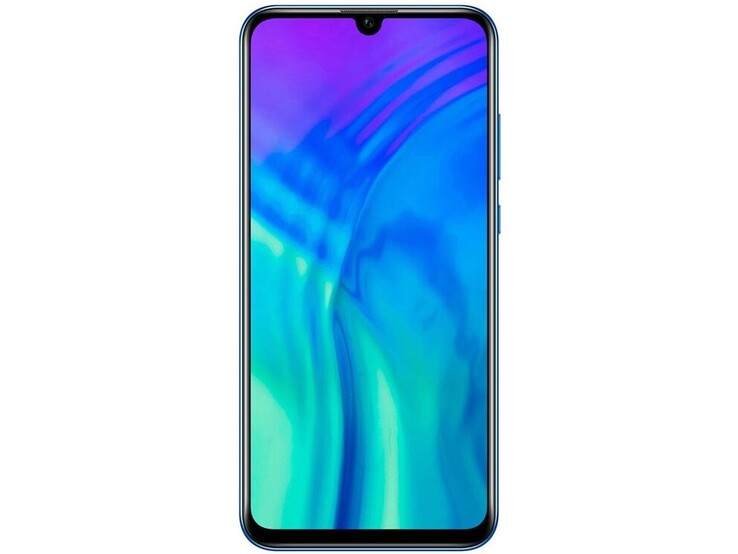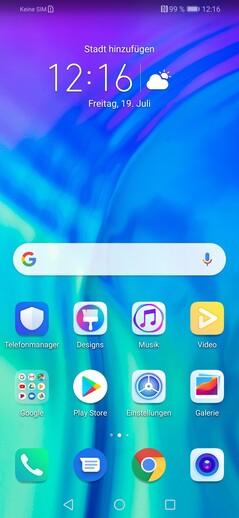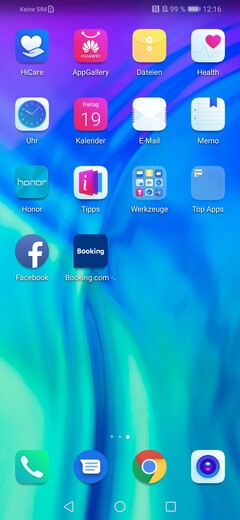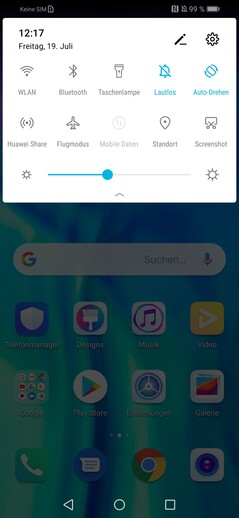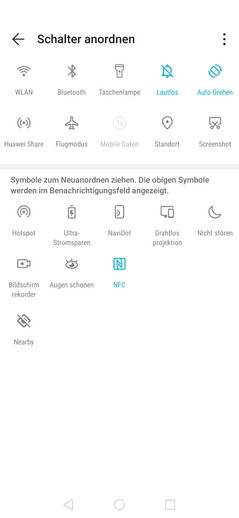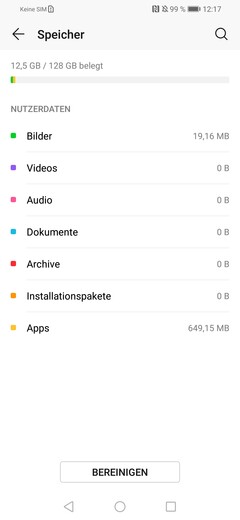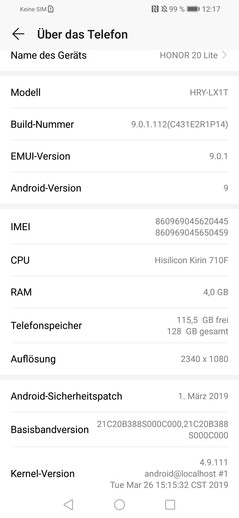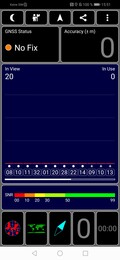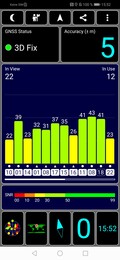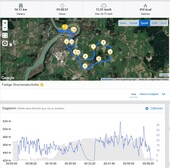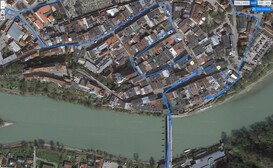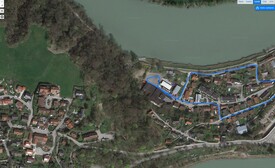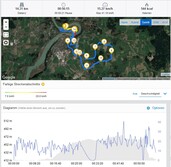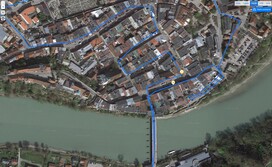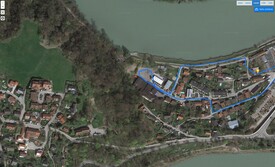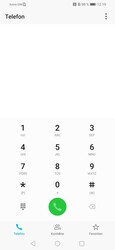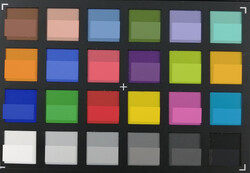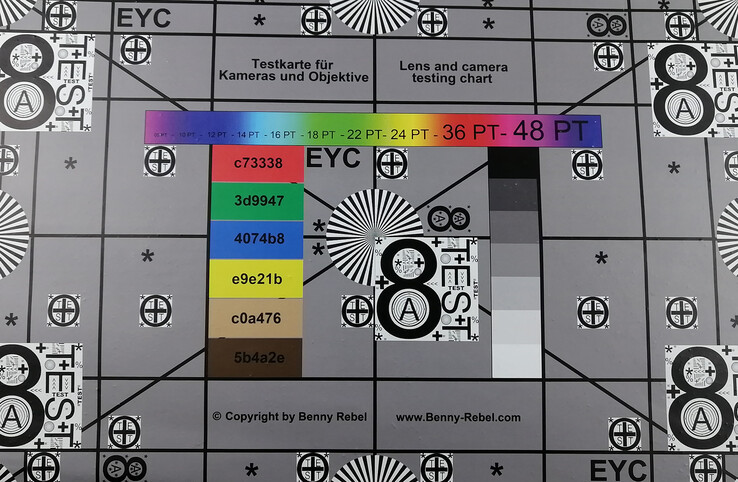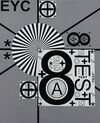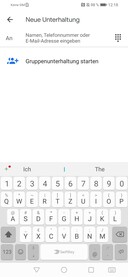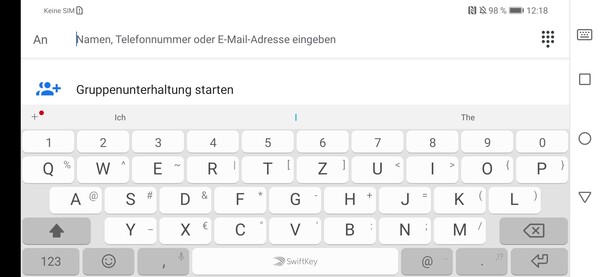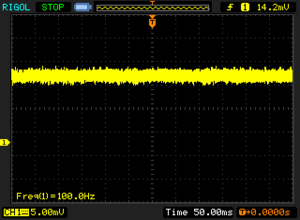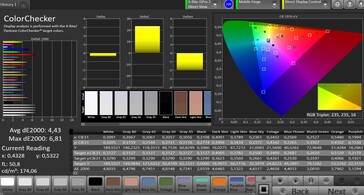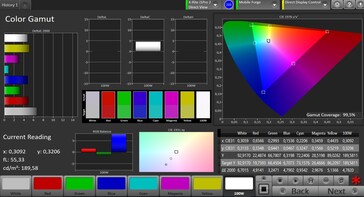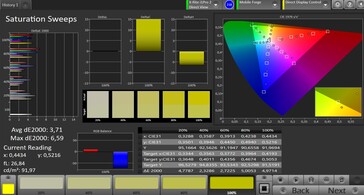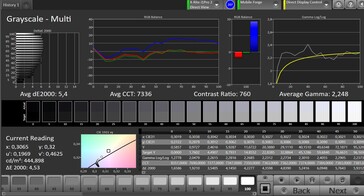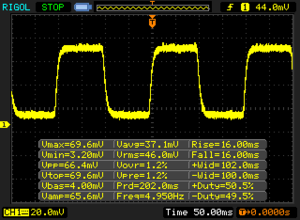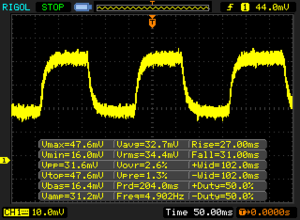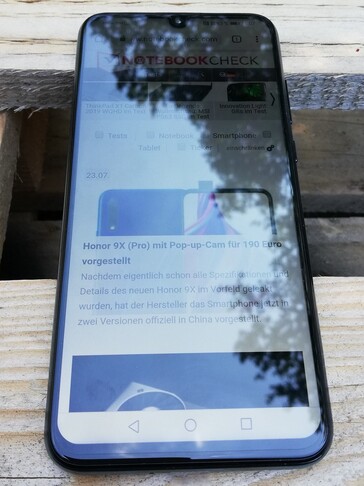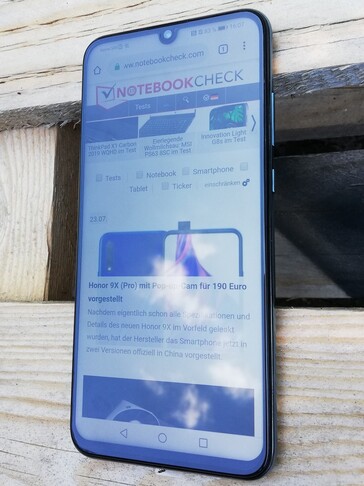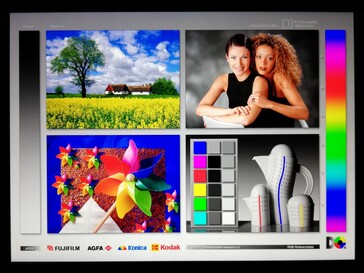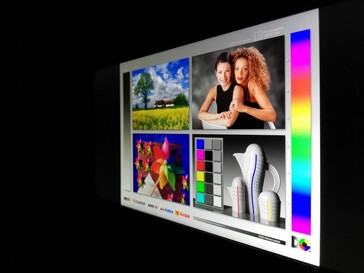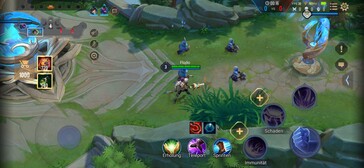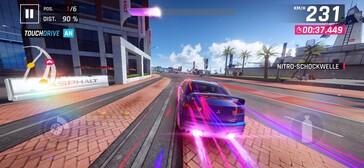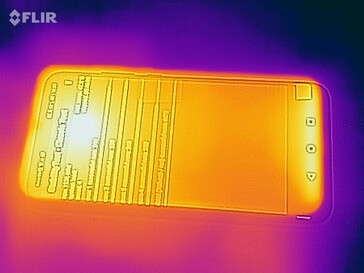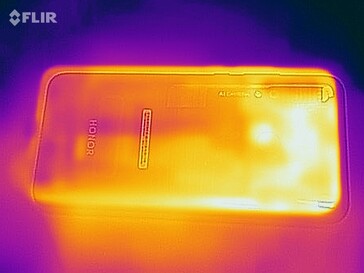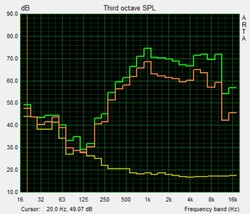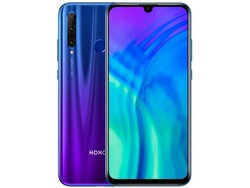Honor 20 Lite Review: Selfie Smartphone with GPU Turbo

Earlier this year, the Chinese manufacturer has already shown the potential to unite a modern design and good features while keeping the price low, with the predecessor Honor 10 Lite. Corners were cut elsewhere, a fact that is also reflected by the specifications of the Honor 20 Lite. Overall, the HiSilicon Kirin 710 and the 4 GB of RAM on data sheet at least hint at the capabilities for smooth system operation. On top of that, there is an ARM Mali-G51 MP4 graphics unit and 128 GB of eMMC flash strorage.
In our review, the Honor 20 Lite not only competes against its direct predecessor, but also against other competing devices. We have selected the Samsung Galaxy A40, Motorola One Vision, Huawei P Smart Plus 2019, and the Xiaomi Mi 9 SE from the sheer endless number of choices. Further devices can be added for comparison below every table.
Case - Solid Honor Smartphone
The Honor 20 Lite comes in Midnight Black, Phantom Red and Phantom Blue. The frame is made of metal and the material on the back of the case appears to be acrylic plastic of some sort. The front is dominated by the screen due to the screen-to-body ratio of more than 90 percent. The build quality is very good and merits no criticism. All transitions between the materials are even and the physical buttons sit firmly in their respective sockets. The microSD/nano-SIM card tray is the only thing embedded slightly too deeply, causing it to not be level with the rest of the frame. The hole that is used for the SIM needle to eject the tray represents another shortcoming. Directly adjacent to it, there is a microphone opening. This can lead to users accidentally jamming the SIM needle into the microphone and damaging the insides of the Android smartphone.
The measurements of the Honor 20 Lite are around the average of the devices we have chosen for comparison and almost match those of the Huawei P Smart Plus 2019. The 20 Lite does weigh slightly more however.
Features - Android Phone with Dual SIM and NFC
Sporting a HiSilicon Kirin 710 and 4 GB of RAM, the Honor 20 Lite offers a standard mid-range configuration. Thanks to the generous 128-GB eMMC flash storage and ARM Mali-G51 MP4 graphics unit, slightly more demanding apps run on it as well. According to the manufacturer, the internal storage can be expanded through a microSD card by up to one terabyte if you do run out of internal storage space. Since the 20 Lite only possesses one hybrid slot, you will end up losing dual SIM functionality. Although both SIM slots support LTE, there were no VoLTE and VoWiFi items in the menu. Streaming fans can enjoy Full HD Netflix, Maxdome or Amazon Prime content thanks to DRM Widevine L1 support.
A Micro-USB port is available for wired data transfer, although it only supports the USB 2.0 standard internally. Additionally, there is a 3.5 mm audio jack for use with headsets and external speakers.
Software - Android Pie and EMUI 9.0.1
Users of the 20 Lite are greeted by a system with Android Pie version 9, which contains security patches from March 1st 2019 and the manufacturer's own custom user interface EMUI 9.0.1. While it is strongly stock Android inspired, it offers many additional apps as well as a different layout of the settings menus. However, both beginners and Android veterans should get the hang of it very quickly.
Apart from the customized stock apps, the Honor smartphone also comes with Huawei's AppGallery, HiCare and the PC software HiSuite. The first application's focus is on Huawei's recommended apps, the second app offers various support features. Finally, HiSuite provides synchronization and update features, which can be deployed from the PC to the smartphone. The preinstalled applications can only be disabled through the settings, uninstalling them is not possible.
The settings menu allows for just one user with a Huawei ID and various accounts. User account control, which allows for setting up multiple user accounts, is not available.
Communication and GPS - Fast LTE but Slow Wi-Fi
The Honor 20 Lite is able to establish a connection to mobile GSM, 3G and LTE networks. LTE Cat. 12 is supported, which translates to download speeds of up to 600 Mbit/s and upload speeds of up to 100 Mbit/s. Furthermore, users have access to NFC, Bluetooth 4.2 and the Wi-Fi standards 802.11 b, g and n for near-field communication.
Since Honor does not include the faster Wi-Fi standard ac or 2x2 MIMO antenna technology, the attained speeds in our test are low. At 53.6 Mbit/s and 53.2 Mbit/s for receiving and sending data, respectively, it comes in last in our comparison.
| Networking | |
| iperf3 transmit AX12 | |
| Motorola One Vision | |
| Xiaomi Mi 9 SE | |
| Samsung Galaxy A40 | |
| Huawei P Smart Plus 2019 | |
| Honor 20 Lite | |
| iperf3 receive AX12 | |
| Motorola One Vision | |
| Xiaomi Mi 9 SE | |
| Samsung Galaxy A40 | |
| Huawei P Smart Plus 2019 | |
| Honor 20 Lite | |
We tested the locating capabilities of the Honor 20 Lite using "GPS Test". The Android smartphone supports GPS, BeiDou and GLONASS and we were able achieve an accuracy of within 5 meters (~16 ft) outdoors. The smartphone was unable to determine our location indoors however.
We compared the GPS of the Honor 20 Lite to our reference device Garmin Edge 520 on our mandatory bike ride. This comparison illustrates that the distance traveled is recorded rather precisely. Only curves and a sudden change in direction throw the Android smartphone off slightly. Despite this, the Honor 20 Lite is suitable for simple navigation tasks.
Telephony and Call Quality - Honor 20 with Clear Connection
Users of the Honor 20 Lite have access to Huawei's own telephony app for calls. It allows direct access to a numeric dial pad as well as contacts and saved favorites in two additional tabs.
Since the volume of our conversational partners is only moderately high, loud ambient noise can interfere with communication. Quieter ambient noise is filtered out reliably however and the call quality is good.
Cameras - Strong Selfie Cam and Main Triple-Camera
On the back of the 20 Lite, Honor installs a triple-camera. It contains a 24 MP sensor with an f/1.8 aperture and two 8 MP sensors, one with an f/2.2 and the other one with an f/2.4 aperture. Additionally, there is a 32 MP selfie camera with an f/2.0 sensor on the front that takes great portrait shots. Details and fine structures are separated clearly and colors look vibrant. Users may influence the image quality through the camera app by enabling a Bokeh mode, various lighting effects or soft focus via the beauty mode. With the AI mode, the 20 Lite selects the best settings for the current motif automatically.
The main camera takes great panorama shots that capture a lot of details and separate the boundaries of objects well. Shots against the light cause the image to become too dark however, which also negatively impacts colors. Close-up shots capture focused objects with a lot of detail and retain a lot of sharpness, even at greater magnification levels. The colors appear somewhat dull however. While the camera of the 20 Lite is able to capture our test image even under poor lighting conditions, the resulting picture noticeably lacks sharpness. Aside from the aforementioned options also found on the front camera, the main camera includes modes such as various color filters and a pro mode. The latter allows for adjusting the brightness, ISO-setting, shutter speed, exposure value, focus and color balance.
The quality of video recordings is similar to that of our sample pictures. The camera manages to offset transitions from bright to dark image areas after a short delay and users have the option to use a beauty mode here as well. Furthermore, there is wide-angle mode and the option to choose between different resolutions. The following modes are available:
- 1,080p FHD (18.7:9) at 1,920x920 pixels
- 1,080p FHD (60 FPS) at 1,920x1,080 pixels
- 1,080p FHD 1,920x1,080 pixels
- 720p HD at 1,280x720 pixels
Video recordings can be saved using either the H.264 or the H.265 format.
We use ColorChecker passport to determine how well the camera of the Honor 20 Lite is able to capture colors. It reveals that colors appear too dark.
The Honor smartphone is able to depict our test chart well under controlled lighting conditions. Fine details and structures remain clearly distinguishable and colors look vibrant. There is a noticeable paleness towards the middle of the left edge.
Accessories and Warranty - Android Smartphone with Included Protective Case
The Honor 20 Lite's scope of delivery includes a USB charger with a matching Micro-USB cable, a protective case made of silicone and a SIM needle. Honor does not offer additional accessories specifically tailored to the 20 Lite. That said, the manufacturer offers numerous generic smartphone accessories in an online shop, ranging from headphones to powerbanks to smart wristbands.
Honor offers buyers of the 20 Lite a warranty period of 24 months. Further information on this topic can be found in our FAQ regarding guarantees, return policies and warranties.
Input Devices & Handling - SwiftKey Preinstalled for Rapid Typing
The keyboard app SwiftKey is available for the typing needs of users of the Honor 20 Lite. It allows users to quickly enter longer sentences without too much of a hassle. Additionally, there are numerous customization options, which can for example, change the size, layout or color theme of the keyboard. The touchscreen responds to inputs reliably and relays them directly to the system. The installed screen protector tends to get in the way of drag-and-drop movements however. The position sensor reacts reliably to rotations of the smartphone and quickly adjust the display orientation of the phone.
There is a fingerprint sensor on the back of the Android smartphone for unlocking the phone. It quickly recognizes stored fingerprints and unlocks the Honor 20 without delay.
Display - Large Smartphone Display with a Mediocre Contrast Ratio
The Honor 20 Lite's screen consists of a 6.21-inch IPS panel with an aspect ratio of 19.5:9 and a resolution of 2,340x1,080 pixels. 456 nits brightness and 94 percent illumination place the 20 Lite in the middle range of our comparison. With the ambient light sensor enabled, maximum brightness is 470 nits and up to 450 nits in the APL50 test.
The display begins to flicker with a frequency of 100 Hz at brightness levels below 15 percent.
| |||||||||||||||||||||||||
Brightness Distribution: 94 %
Center on Battery: 455 cd/m²
Contrast: 784:1 (Black: 0.58 cd/m²)
ΔE ColorChecker Calman: 4.43 | ∀{0.5-29.43 Ø4.78}
ΔE Greyscale Calman: 5.4 | ∀{0.09-98 Ø5}
99.5% sRGB (Calman 2D)
Gamma: 2.248
CCT: 7336 K
| Honor 20 Lite IPS, 2340x1080, 6.2" | Samsung Galaxy A40 Super AMOLED, 2340x1080, 5.9" | Motorola One Vision IPS, 2520x1080, 6.3" | Huawei P Smart Plus 2019 IPS, 2340x1080, 6.2" | Xiaomi Mi 9 SE AMOLED, 2340x1080, 6" | |
|---|---|---|---|---|---|
| Screen | -28% | 6% | 45% | 36% | |
| Brightness middle (cd/m²) | 455 | 358 -21% | 626 38% | 427 -6% | 583 28% |
| Brightness (cd/m²) | 456 | 370 -19% | 564 24% | 415 -9% | 577 27% |
| Brightness Distribution (%) | 94 | 94 0% | 84 -11% | 84 -11% | 97 3% |
| Black Level * (cd/m²) | 0.58 | 0.41 29% | 0.2 66% | ||
| Contrast (:1) | 784 | 1527 95% | 2135 172% | ||
| Colorchecker dE 2000 * | 4.43 | 7.4 -67% | 5.7 -29% | 1.95 56% | 1.6 64% |
| Colorchecker dE 2000 max. * | 6.81 | 12.5 -84% | 10.5 -54% | 4.47 34% | 3.9 43% |
| Greyscale dE 2000 * | 5.4 | 4 26% | 7.8 -44% | 2.3 57% | 2.7 50% |
| Gamma | 2.248 98% | 2.084 106% | 2.13 103% | 2.07 106% | 2.27 97% |
| CCT | 7336 89% | 7078 92% | 8662 75% | 6414 101% | 6267 104% |
* ... smaller is better
Screen Flickering / PWM (Pulse-Width Modulation)
| Screen flickering / PWM detected | 100 Hz | ≤ 15 % brightness setting | |
The display backlight flickers at 100 Hz (worst case, e.g., utilizing PWM) Flickering detected at a brightness setting of 15 % and below. There should be no flickering or PWM above this brightness setting. The frequency of 100 Hz is very low, so the flickering may cause eyestrain and headaches after extended use. In comparison: 53 % of all tested devices do not use PWM to dim the display. If PWM was detected, an average of 8108 (minimum: 5 - maximum: 343500) Hz was measured. | |||
Our measurements from the Honor 20 Lite reveal a relatively low contrast ratio of 784:1 and an elevated black value of 0.58 nits. This causes colors not to be clearly distinguished and black areas of the picture to appear as though they have a faint gray veil. Due to both values being low, the Android smartphone comes in last in our comparison.
As the CalMAN analysis shows, colors on the 20 Lite exhibit a significant blue taint. Users also have the option of adjusting the color temperature through the modes standard, normal, and vibrant. There is also a freely adjustable gamut, which allows users to individually influence color representation.
Display Response Times
| ↔ Response Time Black to White | ||
|---|---|---|
| 32 ms ... rise ↗ and fall ↘ combined | ↗ 16 ms rise | |
| ↘ 16 ms fall | ||
| The screen shows slow response rates in our tests and will be unsatisfactory for gamers. In comparison, all tested devices range from 0.1 (minimum) to 240 (maximum) ms. » 85 % of all devices are better. This means that the measured response time is worse than the average of all tested devices (20.2 ms). | ||
| ↔ Response Time 50% Grey to 80% Grey | ||
| 58 ms ... rise ↗ and fall ↘ combined | ↗ 27 ms rise | |
| ↘ 31 ms fall | ||
| The screen shows slow response rates in our tests and will be unsatisfactory for gamers. In comparison, all tested devices range from 0.165 (minimum) to 636 (maximum) ms. » 94 % of all devices are better. This means that the measured response time is worse than the average of all tested devices (31.6 ms). | ||
The Honor 20 Lite's IPS panel has great viewing angles. Screen contents are recognizable at almost every angle without distortions or misrepresented colors. As long as there are no reflections from objects in the near vicinity or glare, the Android smartphone can be used from unusual viewing angles.
Performance - Honor 20 Lite Offers Mid-Range Performance
The Honor 20 Lite is powered by a HiSilicon Kirin 710 and an ARM Mali-G51 MP4 graphics unit. On top of that there are 4 GB of RAM and 128 GB of eMMC flash storage available. The hardware is able to run most apps that are needed during daily use, while also possessing a few additional resources for slightly more demanding applications.
The 20 Lite achieved scores not unlike those of the Huawei P Smart Plus 2019 in our benchmarks, putting it in the middle range in our comparison. While the 2019 P Smart Plus is equipped with an identical SoC and GPU, it comes with just 3 GB of RAM. However, it only falls behind by a small margin and sometimes even outperforms the Honor smartphone.
| PCMark for Android | |
| Work performance score (sort by value) | |
| Honor 20 Lite | |
| Samsung Galaxy A40 | |
| Motorola One Vision | |
| Huawei P Smart Plus 2019 | |
| Xiaomi Mi 9 SE | |
| Average HiSilicon Kirin 710 (7004 - 9854, n=13) | |
| Work 2.0 performance score (sort by value) | |
| Honor 20 Lite | |
| Samsung Galaxy A40 | |
| Motorola One Vision | |
| Huawei P Smart Plus 2019 | |
| Xiaomi Mi 9 SE | |
| Average HiSilicon Kirin 710 (5803 - 7141, n=12) | |
| AnTuTu v7 - Total Score (sort by value) | |
| Honor 20 Lite | |
| Samsung Galaxy A40 | |
| Motorola One Vision | |
| Huawei P Smart Plus 2019 | |
| Xiaomi Mi 9 SE | |
| Average HiSilicon Kirin 710 (124870 - 183420, n=10) | |
Compared to other devices in our comparison, the Honor 20 Lite reaches an average result in our browser benchmarks. Here, it also sometimes scores marginally higher or lower than the Huawei P Smart Plus 2019, depending on the benchmark. During daily use, the browser of the 20 Lite displays web pages quickly and smoothly. Media content loads quickly as well.
| JetStream 1.1 - Total Score | |
| Huawei P Smart Plus 2019 (Chrome 74) | |
| Honor 20 Lite (Chrome 75) | |
| Motorola One Vision (Chrome) | |
| Average HiSilicon Kirin 710 (47 - 55.1, n=10) | |
| Samsung Galaxy A40 (Chrome 73) | |
| Jetstream 2 - 2.0 Total Score | |
| Average of class Smartphone (23.8 - 387, n=149, last 2 years) | |
| Xiaomi Mi 9 SE (Chrome 73) | |
| Average HiSilicon Kirin 710 (30 - 33, n=8) | |
| Motorola One Vision (Chrome) | |
| Huawei P Smart Plus 2019 (Chrome 74) | |
| Honor 20 Lite (Chrome 75) | |
| Samsung Galaxy A40 (Chrome 73) | |
| Speedometer 2.0 - Result 2.0 | |
| Average of class Smartphone (15.2 - 643, n=122, last 2 years) | |
| Xiaomi Mi 9 SE (Chrome 73) | |
| Honor 20 Lite (Chrome 75) | |
| Average HiSilicon Kirin 710 (30.4 - 33.9, n=6) | |
| Huawei P Smart Plus 2019 (Chome 74) | |
| Motorola One Vision (Chrome) | |
| Samsung Galaxy A40 (Chrome 73) | |
| WebXPRT 3 - Overall | |
| Average of class Smartphone (38 - 380, n=31, last 2 years) | |
| Xiaomi Mi 9 SE (Chrome 73) | |
| Motorola One Vision (Chrome) | |
| Huawei P Smart Plus 2019 (Chrome 74) | |
| Honor 20 Lite (Chrome 75) | |
| Average HiSilicon Kirin 710 (52 - 69, n=11) | |
| Samsung Galaxy A40 (Chrome 73) | |
| Octane V2 - Total Score | |
| Average of class Smartphone (2228 - 121337, n=197, last 2 years) | |
| Xiaomi Mi 9 SE (Chrome 73) | |
| Motorola One Vision (Chrome) | |
| Huawei P Smart Plus 2019 (Chrome 74) | |
| Average HiSilicon Kirin 710 (9041 - 10544, n=13) | |
| Honor 20 Lite (Chrome 75) | |
| Samsung Galaxy A40 (Chrome 73) | |
| Mozilla Kraken 1.1 - Total | |
| Samsung Galaxy A40 (Chrome 73) | |
| Honor 20 Lite (Chrome 75) | |
| Huawei P Smart Plus 2019 (Chrome 74) | |
| Average HiSilicon Kirin 710 (3999 - 4853, n=13) | |
| Motorola One Vision (Chrome) | |
| Xiaomi Mi 9 SE (Chrome 73) | |
| Average of class Smartphone (257 - 28190, n=154, last 2 years) | |
* ... smaller is better
128 GB of eMMC storage are available to users of the Honor 20 Lite, although only about 115 GB are available for apps and personal data. In our storage benchmarks, the 20 Lite, again, scores an average result compared to other devices in our comparison. It also narrowly outperforms the Huawei P Smart Plus 2019 in this test.
According to the manufacturer, the internal storage can be expanded by up to 1 TB with a microSD card. With our reference card Toshiba Exceria Pro M501, the integrated card reader achieves data transfer rates that are on par with the other devices in our comparison.
| Honor 20 Lite | Samsung Galaxy A40 | Motorola One Vision | Huawei P Smart Plus 2019 | Xiaomi Mi 9 SE | Average 128 GB eMMC Flash | Average of class Smartphone | |
|---|---|---|---|---|---|---|---|
| AndroBench 3-5 | -5% | 55% | -2% | 49% | 16% | 631% | |
| Sequential Read 256KB (MB/s) | 288.1 | 295 2% | 499.5 73% | 295.4 3% | 492.5 71% | 300 ? 4% | 2228 ? 673% |
| Sequential Write 256KB (MB/s) | 200.9 | 99.6 -50% | 192.2 -4% | 152.8 -24% | 190.1 -5% | 195.1 ? -3% | 1852 ? 822% |
| Random Read 4KB (MB/s) | 38.7 | 75.7 96% | 108.2 180% | 40.3 4% | 115.8 199% | 85.9 ? 122% | 296 ? 665% |
| Random Write 4KB (MB/s) | 73.1 | 13.2 -82% | 126.6 73% | 77.3 6% | 21.86 -70% | 58.1 ? -21% | 339 ? 364% |
| Sequential Read 256KB SDCard (MB/s) | 75.7 ? | 81.2 ? 7% | 78.1 ? 3% | 76.3 ? 1% | 78.1 ? 3% | ||
| Sequential Write 256KB SDCard (MB/s) | 66.9 ? | 65.2 ? -3% | 68.8 ? 3% | 66.7 ? 0% | 61.8 ? -8% |
Gaming - Enough Gaming Prowess for Popular Titles
The ARM Mali-G51 MP4 graphics unit offers enough performance to display modern games smoothly at medium graphics settings. The titles we tested, "Arena of Valor" and "Asphalt 9: Legends", ran smoothly even on high settings. The touchscreen controls were responsive and did not appear to have any delays. Only longer drag-and-drop movements are hindered somewhat by the applied screen protector. The gyroscope reacted reliably as well and directly relayed smartphone movements to the respective game.
Emissions - Honor 20 Lite with Decent Speakers
Temperature
Our measurements of the Honor 20 Lite's surfaces reveal temperatures of up to 35.4 °C (~96 °F) during idle and up to 45.1 °C (~113 °F) under load. The smartphone feels particularly warm in the upper half of the device. During our testing, we did not experience any limitations that could be attributed to excessively high temperatures.
(-) The maximum temperature on the upper side is 45.1 °C / 113 F, compared to the average of 35.2 °C / 95 F, ranging from 21.9 to 247 °C for the class Smartphone.
(±) The bottom heats up to a maximum of 42.5 °C / 109 F, compared to the average of 34 °C / 93 F
(±) In idle usage, the average temperature for the upper side is 34.2 °C / 94 F, compared to the device average of 32.9 °C / 91 F.
Speakers
The Honor 20 Lite's speaker offers a moderate volume level and a relatively balanced sound, which is characterized by a sharp decline of frequencies below the mids and an underrepresented high end of the spectrum. Thus it is definitely suitable for occasional media playback in quiet environments. For prolonged listening sessions, users should invest in external speakers or headphones, which aside from Bluetooth can also be connected via the 3.5 mm audio jack of the 20 Lite. Plugs snap in firmly and the connection does not negatively impact the sound quality.
Honor 20 Lite audio analysis
(±) | speaker loudness is average but good (81.9 dB)
Bass 100 - 315 Hz
(-) | nearly no bass - on average 67.4% lower than median
(+) | bass is linear (0% delta to prev. frequency)
Mids 400 - 2000 Hz
(-) | nearly no mids - on average 67.4% lower than median
(+) | mids are linear (0% delta to prev. frequency)
Highs 2 - 16 kHz
(-) | nearly no highs - on average 67.4% lower than median
(+) | highs are linear (0% delta to prev. frequency)
Overall 100 - 16.000 Hz
(-) | overall sound is not linear (122.6% difference to median)
Compared to same class
» 91% of all tested devices in this class were better, 7% similar, 2% worse
» The best had a delta of 11%, average was 35%, worst was 134%
Compared to all devices tested
» 97% of all tested devices were better, 2% similar, 1% worse
» The best had a delta of 4%, average was 24%, worst was 134%
Huawei P Smart Plus 2019 audio analysis
(±) | speaker loudness is average but good (81.8 dB)
Bass 100 - 315 Hz
(-) | nearly no bass - on average 66% lower than median
(+) | bass is linear (0% delta to prev. frequency)
Mids 400 - 2000 Hz
(-) | nearly no mids - on average 66% lower than median
(+) | mids are linear (0% delta to prev. frequency)
Highs 2 - 16 kHz
(-) | nearly no highs - on average 66% lower than median
(+) | highs are linear (0% delta to prev. frequency)
Overall 100 - 16.000 Hz
(-) | overall sound is not linear (121.3% difference to median)
Compared to same class
» 90% of all tested devices in this class were better, 8% similar, 2% worse
» The best had a delta of 11%, average was 35%, worst was 134%
Compared to all devices tested
» 97% of all tested devices were better, 2% similar, 1% worse
» The best had a delta of 4%, average was 24%, worst was 134%
Battery Life - Android Smartphone with Good Battery Life
Energy Consumption
According to our measurements, the Honor 20 Lite consumes at least 0.9 watts during idle and up to 9.1 watts under load. These consumption values are slightly higher than those of other smartphones in our comparison, only the Samsung Galaxy A40 has an identical average consumption.
The included USB charger delivers 10 watts and is thus sufficiently equipped to power the Honor 20 Lite regardless of the load level.
| Off / Standby | |
| Idle | |
| Load |
|
Key:
min: | |
| Honor 20 Lite 3400 mAh | Samsung Galaxy A40 3100 mAh | Motorola One Vision 3500 mAh | Huawei P Smart Plus 2019 3400 mAh | Xiaomi Mi 9 SE 3070 mAh | Average HiSilicon Kirin 710 | Average of class Smartphone | |
|---|---|---|---|---|---|---|---|
| Power Consumption | 0% | 7% | 15% | 42% | -7% | 0% | |
| Idle Minimum * (Watt) | 0.9 | 0.8 11% | 0.75 17% | 0.8 11% | 0.53 41% | 1.058 ? -18% | 0.842 ? 6% |
| Idle Average * (Watt) | 1.6 | 1.4 12% | 2.14 -34% | 1.2 25% | 1.18 26% | 2.2 ? -38% | 1.439 ? 10% |
| Idle Maximum * (Watt) | 2.2 | 2.3 -5% | 2.27 -3% | 2.3 -5% | 1.2 45% | 2.57 ? -17% | 1.624 ? 26% |
| Load Average * (Watt) | 6 | 7.4 -23% | 4.36 27% | 4.5 25% | 3.04 49% | 4.61 ? 23% | 7.03 ? -17% |
| Load Maximum * (Watt) | 9.1 | 8.6 5% | 6.48 29% | 7.3 20% | 4.83 47% | 7.6 ? 16% | 11.3 ? -24% |
* ... smaller is better
Battery Life
In our Wi-Fi test, which aims to mirror real-world conditions, the Honor 20 Lite lasts for about eleven and a half hours before it needs to be reconnected to a charger. This is a much better result than that of the Huawei P Smart Plus 2019, which despite its identical battery lasts for a significantly shorter amount of time.
The included charger can fully charge the 3,500 mAh battery of the Honor 20 Lite within approximately two hours.
| Honor 20 Lite 3400 mAh | Samsung Galaxy A40 3100 mAh | Motorola One Vision 3500 mAh | Huawei P Smart Plus 2019 3400 mAh | Xiaomi Mi 9 SE 3070 mAh | |
|---|---|---|---|---|---|
| Battery runtime | |||||
| WiFi v1.3 (h) | 11.4 | 10.7 -6% | 13 14% | 8.7 -24% | 8.5 -25% |
Pros
Cons
Verdict - A Lot of Camera and Not a Lot of Wi-Fi
In our test, the Honor 20 Lite presented itself as solid mid-range smartphone. While the performance level is just average compared to similar devices, the large internal storage and the handy triple-camera are definitely good arguments for a purchase. Additionally, battery life is long and users can expand the internal storage by up to one terabyte. The 20 Lite does lack a true highlight however, although it does not have a lot of competition within its device class when it comes to its strong 32 MP front camera.
While the Honor 20 Lite shines with a 32 MP front camera, it also includes slower Wi-Fi.
The Honor 20 Lite's screen possesses an average brightness; the contrast ratio and black value are mediocre at best compared to the competition however. Additionally, the slow Wi-Fi connection is only able to communicate on the 2.4 GHz band. Since NFC is available and for those who prefer to browse using the mobile network and LTE as well as take high-resolution selfies often, the Honor 20 Lite may still be the right Android smartphone.
Honor 20 Lite
- 07/26/2019 v6 (old)
Mike Wobker




